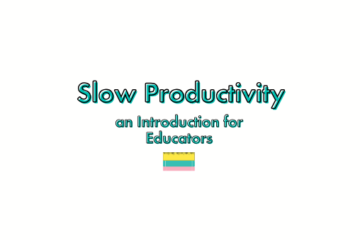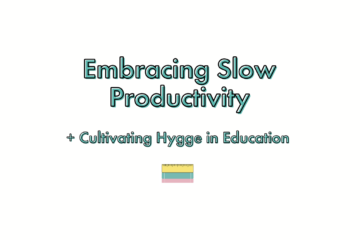Creating a successful classroom environment is more than just arranging desks and hanging decorations; it’s about cultivating a space where both students and teachers can thrive.
As education consultants, each with 10+ years in the classroom and having worked with hundreds of new and aspiring teachers, we are sharing three powerful ways to set a classroom up for success – and they might not be what you’d expect!
1. Prioritizing Teacher Well-being
Whether we are working with teachers to pass a licensure exam or to run their classroom successfully, reminding them to prioritize their well-being is number one. Yes, the job of a teacher is to care for their students, but we’re here to remind all teachers that putting their own well-being first is essential to having success in the classroom.
The world of education comes with many demands (especially as a new teacher!) and establishing clear limits on time and emotional investment helps prevent burnout. Strategies like setting boundaries, task prioritization, and promoting self-care play a big role in alleviating the stress that can come with running a classroom.
And when you do implement a strategy that puts yourself first, don’t forget to celebrate! Celebrating small wins along the way is an important part of measuring success in your classroom.
Action Step: Whether you’re getting ready to teach your own classroom or you’ve already started, think about this: What does self care look like to you? For some it might be exercise, and for others it may be reading a good book. Think about what works for you, and start making it a daily habit, no matter what!
2. Designing the Physical Classroom Space
The physical layout and organization of a classroom play a pivotal role in shaping the learning environment and setting up the classroom for success. By thoughtfully arranging spaces for collaboration, independent work, and relaxation, teachers can accommodate diverse learning styles and promote a dynamic classroom atmosphere.
While this will look different in every classroom and grade level, there are some typical things we recommend including:
First, incorporating elements of comfort, such as cozy seating areas and soft lighting, creates an inviting ambiance that encourages students to feel at ease and inspired to learn.
Next, curating intentional spaces throughout the classroom to either encourage independent learning or peer collaboration can help students to build important skills. This will usually require explicit instruction on how to use the various spaces, but setting up these routines at the beginning of the school year will set students up for success all year.
Lastly, making sure the spaces of your classroom are organized and decluttered will help students have an easier time cleaning up the space. Again, it may take explicit teaching on how to take care of the space, but in the long run establishing these procedures will save teachers time and stress, as well as teach students the importance of caring for shared spaces.
Action Step: Choose one area of your classroom to tackle. How can you incorporate more comfort, intention, and organization in this space? If you’re not teaching yet, write down some ideas for your future classroom!
3. Celebrating All Learners
Every person learns differently and has unique experiences that affect how they behave in school. This includes both students and teachers! When we work with teachers in any capacity we always make it a priority to understand each one on an individual level, and we encourage the teachers we work with to do this with their students.
People of all ages need to feel valued and supported in order to learn, so recommend taking the first few weeks of school as a time to learn each student’s interests, strengths, and challenges as best as you can. This will be an ongoing process, but starting from day one to understand each child and celebrate their differences will help students to feel respected, important, and safe, and promote a culture of inclusivity and positivity.
If you are very interested in this topic, you might also like this related blog where we dive into Learner Profiles, a big part of individualizing instruction and celebrating all learners!
Action Step: What type of learner are you? Check out this blog for guidance! Think of a fun activity to do with your students to find out what type of learners they each are. Knowing this will set both them and you up for success when it comes to classroom activities and assignments.
4. Bonus Tip: Find Your Teacher Besties
Success in a classroom is going to look different every day, and even at various moments in the same day! It’s common to feel a wide range of emotions all in one school day and it’s important to know you are not alone! Find those coworkers that remind you how amazing you are and are there to help you create success in your classroom and celebrate all of your wins big and small.
Wrapping Up
Creating a successful classroom environment requires more than just physical arrangements; it demands a holistic approach that prioritizes teacher well-being, celebrates small victories, and embraces the uniqueness of every learner.
By fostering a culture of self-care, designing thoughtful physical spaces, and valuing individual student experiences, new teachers can lay the foundation for a thriving learning community. Additionally, finding support among colleagues can provide much-needed encouragement and solidarity throughout the journey.
Remember, success in the classroom is a journey, not a destination, and by implementing these strategies, both teachers and students can flourish together.



